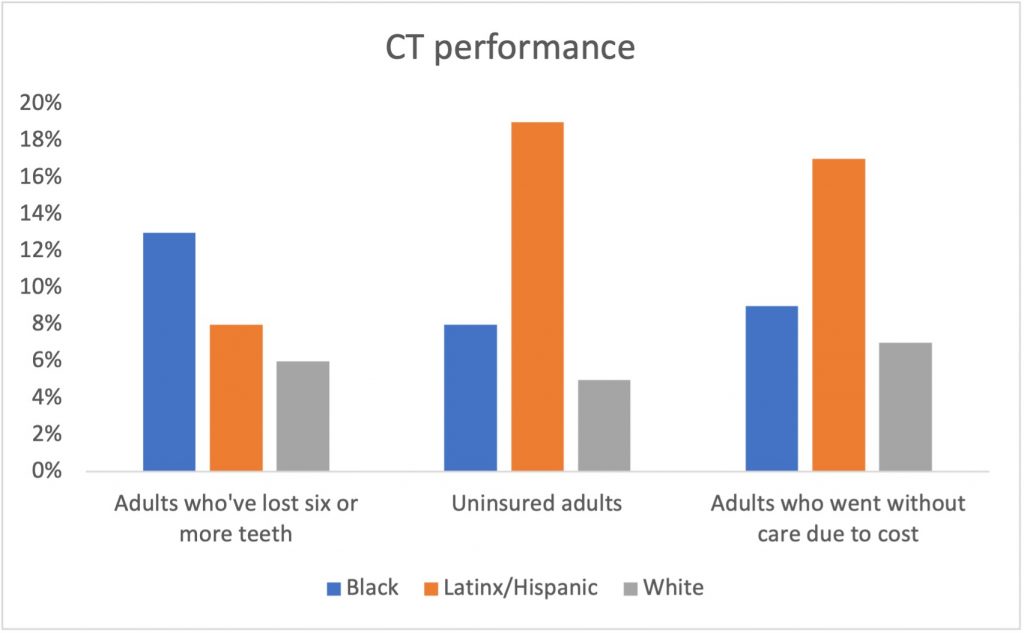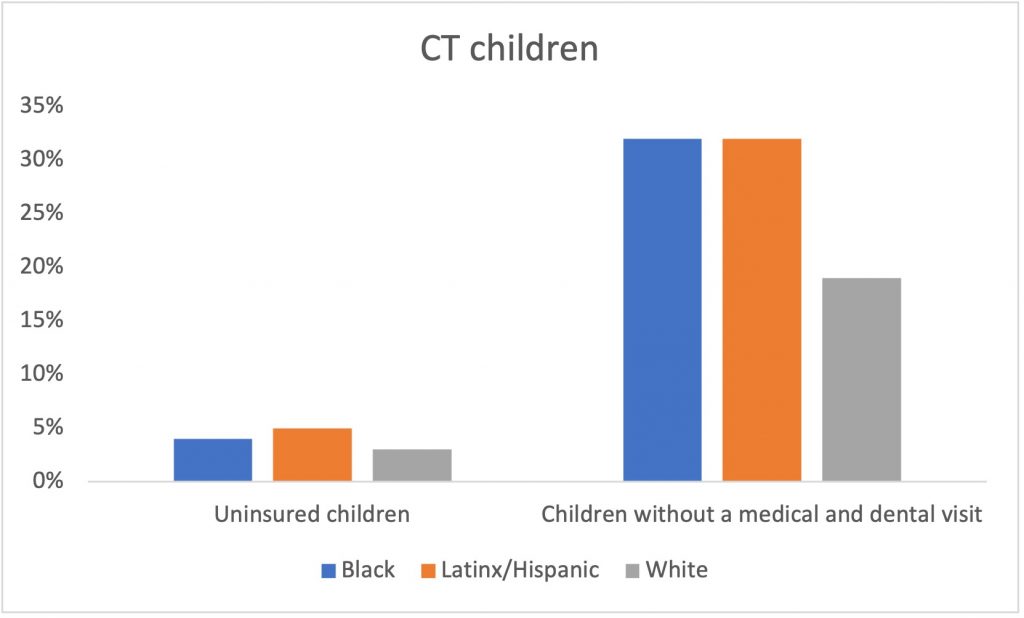Health equity state scorecard finds CT compares well, but needs improvement
Connecticut ranks fifth best among states on overall health equity according to the Commonwealth Fund’s latest state scorecard, but every state has a lot of room for improvement. While whites in Connecticut scored in the 97th percentile for health system performance nationally, Latinx/Hispanic state residents scored at the 68th percentile, and Blacks in Connecticut scored at the 55th percentile. Other races and ethnicities are far less common in our state.
Health disparities have multiple causes including higher rates of poverty, higher risk environments, problems accessing and affording healthcare, and discrimination. The scorecard compared states across 24 indicators for the most recent data years encompassing health outcomes, access, and quality and use of services.
Digging into the details, the picture gets more complex.

Connecticut deaths that could have been avoided with preventive care and preventable hospitalizations are far higher among Black Connecticut residents. Interestingly, colorectal and breast cancer deaths are lower for Latinx/Hispanic residents than for Whites, while Black rates are higher than Whites. This doesn’t track with adult obesity levels, which are high for residents of all races, but higher for both Black and Latinx/Hispanic adults (40% and 37%) than for Whites (27%), according to the report.

There are racial disparities among Connecticut residents on other measures but they vary by race. Thirteen percent of Black adult state residents have lost six or more teeth, compared to Latinx/Hispanics (8%) and Whites (6%). Latinx/Hispanic adult state residents are far more likely to be uninsured and to go without care due to cost than Blacks or Whites.

Thankfully Connecticut is doing much better on other measures. Most adult women of all races are getting mammograms and cervical cancer screens. Spending on primary care for seniors is equal between Blacks and Whites in Connecticut, according to the report.

Connecticut children’s measures hold a clue to how we can improve. Almost all children of all races are insured, and four out of five Latinx/Hispanic and White children received all recommended vaccines. However, one in three Black and Latinx/Hispanic Connecticut children and one in five White children did not get a medical and dental preventive care visit. This contrast offers a clue to find barriers to preventive care visits for all Connecticut children.

